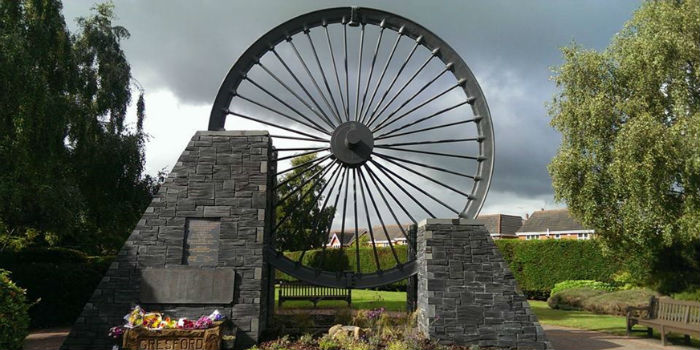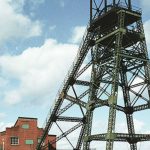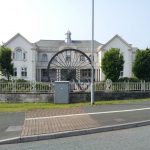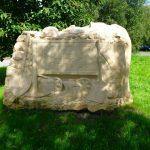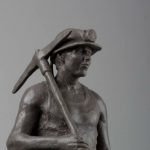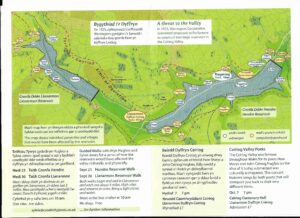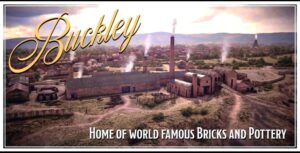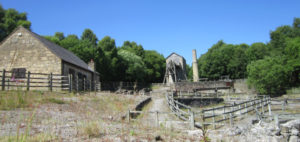In 2010, the Mines Rescue Station, Maesgwyn Road, Wrexham was nominated for listed status. During the consultation period, the then owner decided to pre-empt the listing by sending in bulldozers to knock the building down. Ex miners and interested parties were contacted to help prevent the demolition until the police arrived.
Like-minded people then came together and formed the Trust to promote mining heritage of North Wales and to protect colliery buildings and artefacts for future generations.
Copper, lead, silver, slate, gold, coal are some of the minerals that have been dug out from the sides of mountains, the valleys from as deep as a mile underground & sometimes from under the sea.
With no mining museum in North Wales, the Trust converted an ex library bus into a mobile mining museum.
This proved so popular that it is out almost every weekend during the summer months.
It is also taken to schools where ex miners talk with school children about their mining heritage and children are allowed to handle the tools of the trade on the Miner’s Bus.
John Wiltshire, a Trust director, tried for many years to have a monument for the miners of Point of Ayr Colliery.
He managed to form a committee and the stub headgear at the end of Fynnongroyw was the fruition of his dream.
Not content to sit on his laurels, he then helped to form the group POACH which has been mentioned on a previous blog.
Trust volunteers open the gates of Bersham Colliery on the last Sunday of the month to show off the only colliery headgear left in North Wales and the Grade 2 listed Winding Engine House. The headgear is a Scheduled Ancient Monument. A number of large colliery artefacts were already within the curtilage of the pit head collected by Ted McKay & Glyn Cooper after the closure of Point of Ayr Colliery. The eventual aim is for the Engine House to be Mining Museum for North Wales. Colin Williams, former Assistant Electrical Engineer at Bersham Colliery has almost single handedly rewired the entire Engine House.
Llay Miner’s Welfare is home to one of the Point of Ayr winding wheels installed in 2011. In March 2016 NWMAT played a part in the Llay Main 50 years anniversary for a full day of activities which was an enormous success. 80 balloons were released in memory of the miners who lost their lives at the pit.
Alan Jones is chairman of both NWMAT and Friends of Gresford Colliery Disaster Memorial. In 1934 an explosion caused the deaths of 265 miners at Gresford Colliery. 253 are still entombed where they died. The 80th anniversary was the beginning of a fundraising drive to have the Memorial refurbished and the garden replanted. A service takes place at the Memorial at 11am on the 22nd Septem-ber each year on the anniversary of the disaster.
Hafod Colliery opened in 1867 and closed almost 100 years later in March 1968. Bonc yr Hafod is now a country park and is a conservation area. Commemorative events will be taking place to celebrate the 50th anniversary of the closure in 2018.
The Ifton Colliery Commemorative Project is on track to raise £50,000 for a statue for the occasion of their 50th anniversary also in 2018.
Llay Main was the last pit to be sunk and the first to close in 1967. Llay Main was at one time the deepest mine in Europe. There followed a quick succession closures. Hafod and Ifton in 1968 followed by Gresford in 1973. Shafts were sunk at Bersham Colliery in 1864 and the last tub of coal came up the shaft on December 18th 1986. The closure of Bersham was the end of an era for coal min-ing in the Denbighsire coalfield.
Point of Ayr Colliery closed after over 100 years of production and was the end of approximately 700 years of coal mining in the North Wales coalfield.
Alan and Margaret Jones, NWMAT
Blog articles will only appear in the language they are provided in by the author.
Yn yr iaith y’u hysgrifennwyd gan yr awdur yn unig y bydd yr erthyglau blog yn ymddangos.

